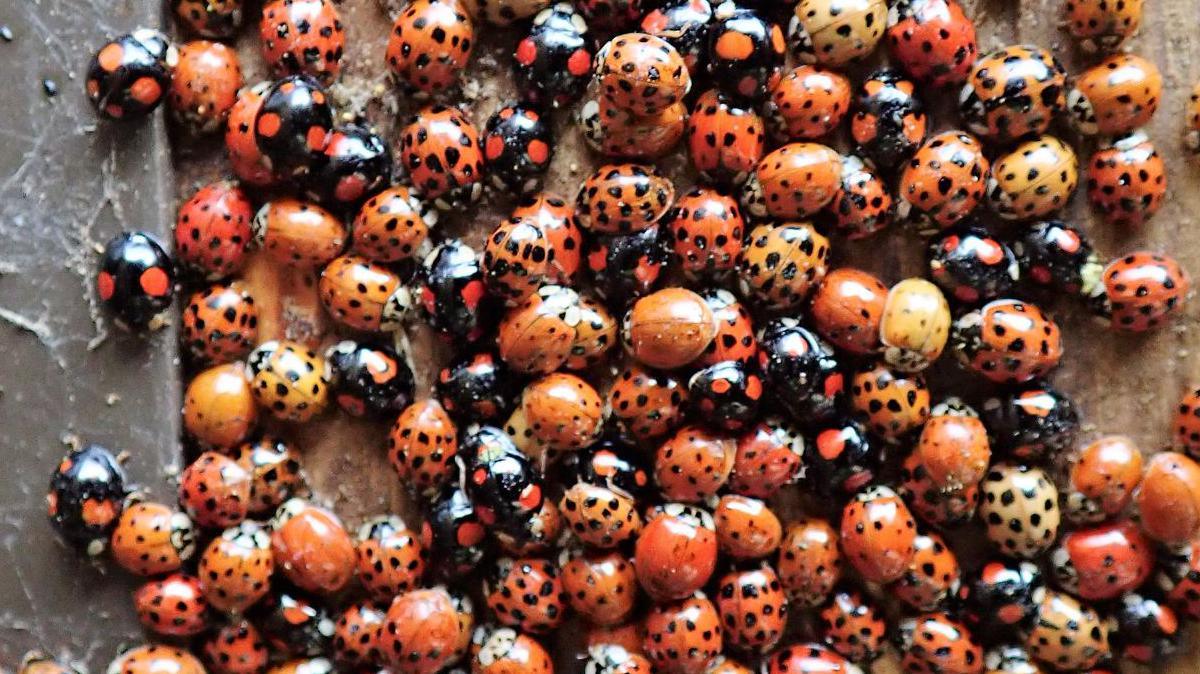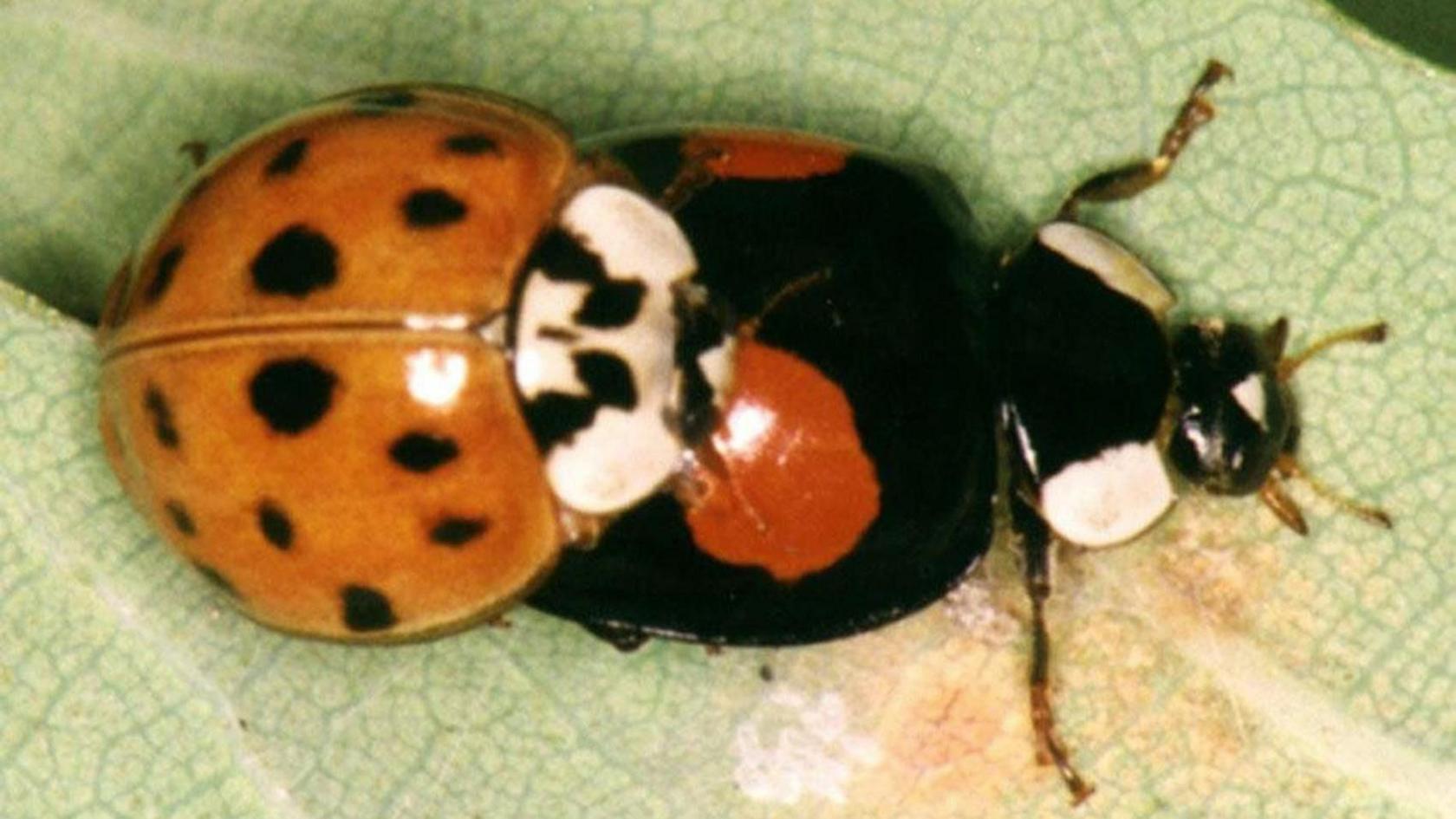 Image source, Getty Images
Image source, Getty Images
ByElizabeth Rizzini
Lead Weather Presenter
An unusual number of ladybirds, swarming and clustering together in homes is being reported on social media this week.
The weather is likely to be responsible for the recent sightings. After a chilly end to September and start to October across the UK, temperatures on Monday peaked in the low twenties in Celsius in central and south-east England and north-east Scotland, above the seasonal average.
Ladybirds have been taking advantage of the dry, sunny conditions this week to fly and find a sheltered warm spot to hide in for winter.
However, Tom Hibbert from conservation charity The Wildlife Trusts says the number of ladybirds spotted this week is actually "perfectly normal for the time of year."
This X post cannot be displayed in your browser. Please enable Javascript or try a different browser.View original content on X
The BBC is not responsible for the content of external sites.
Why do ladybirds gather around windows?
Like many insects, ladybirds enter a state of inactivity over winter known as diapause – an insect version of hibernation. It is as if they are 'pushing pause' on their lives, so they can avoid the cold, harsh weather and emerge in spring when conditions are better.
Dr Elizabeth Duncan, professor of Zoology at the University of Leeds explains why ladybirds appear in swarms at this time of year, which are known as aggregations.
She says: "They huddle together to find shelter and stable conditions. Insects are ectothermic which means they can't regulate their own body temperature and are dependent on their environment, so they need to find spots where they can stay insulated and avoid freezing."
"They need heat and energy to fly so what we are seeing at the moment is them taking advantage of the good weather to find the right place to hunker down for winter."
Often it seems, this cosy spot would appear to be a window sill, as ladybirds can easily squeeze through the small gaps around loose fitting windows.
This X post cannot be displayed in your browser. Please enable Javascript or try a different browser.View original content on X
The BBC is not responsible for the content of external sites.
Allow X content?
This article contains content provided by X. We ask for your permission before anything is loaded, as they may be using cookies and other technologies. You may want to read X’s cookie policy, external and privacy policy, external before accepting. To view this content choose ‘accept and continue’.
The BBC is not responsible for the content of external sites.
A bumper season for insects
This spring was the warmest and sunniest on record across the UK and was followed by the warmest summer on record with a mean temperature of 16.1C, quite some distance above the long-term average.
The warmth and sunshine led to a huge increase in the insect population across the UK and aphids, the scourge of gardeners, boomed according to the Royal Horticultural Society, external.
Aphids are also the main food source of ladybirds, whose numbers consequently surged during the warm and dry weather, along with other flying insects such as butterflies.
Seven-spot or harlequin?
 Image source, Press Association
Image source, Press Association
Populations of some native UK ladybirds are in decline, possibly due in part to the invasive harlequin ladybird
Seven-spot ladybirds (Coccinella septempuctata) are one of the most common of the ladybirds native to the UK, external and like to cluster together in piles of leaves.
It is their invasive cousin, the harlequin (Harmonia axyridis) which you are most likely to find inside your house. The harlequin originated in Asia but is now well established in the UK.
Part of the harlequin's success as a species comes from its ability as a predator. As Dr Elizabeth Duncan says: "Unfortunately, they do compete with and can outcompete some native ladybird species, but they like to overwinter in different environments - harlequins in our homes and seven-spots in leaf litter."
It is easy to tell the difference between the two species, as the seven-spot ladybird is red and has seven spots, while the harlequin can vary in colour and have a greater number of spots.
The section of the body behind the harlequin's head is often white with a black M-shaped marking.
Our changing climate
As our climate continues to warm, resulting in more frequent bouts of extreme weather, we can expect further changes to insect populations.
Dr Elizabeth Duncan explains: "Ladybirds will be affected directly, through for example heat stress, potential changes to their winter dormancy and shifts in where they can survive, and also indirectly through changes in the timing, abundance, and types of food they feed on, particularly those that thrive on aphids."
"The ladybirds that will do well are those that can survive these extreme environments and have a wide diet range."
"Those that prefer cold or survive on only a specialist diet are likely to be more affected."
What can I do if I find ladybirds in my home?
If you find an aggregation of ladybirds on your window, the best thing to do, according to experts, is to leave it alone. The insects will not cause any damage to either you or wooden surfaces.
If you have to move them, it is best to do so very gently and place them in a sheltered warm spot in your garden or an outbuilding.
Tom Hibbert advises us to "be good to ladybirds as they are both beautiful and the gardeners' friend, keeping numbers of plant sucking bugs like aphids in check as they are voracious carnivores."

Click here to play 'Cooler than me?'
.png)
 2 months ago
9
2 months ago
9








 English (US) ·
English (US) ·